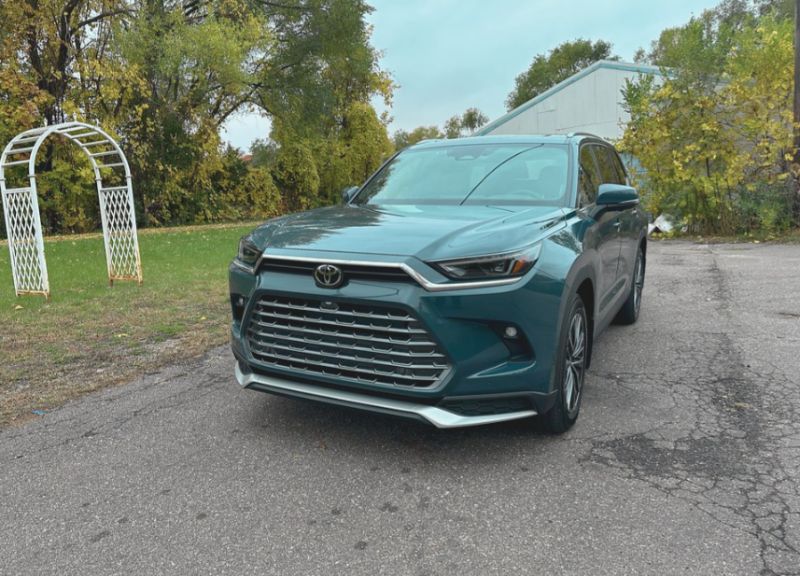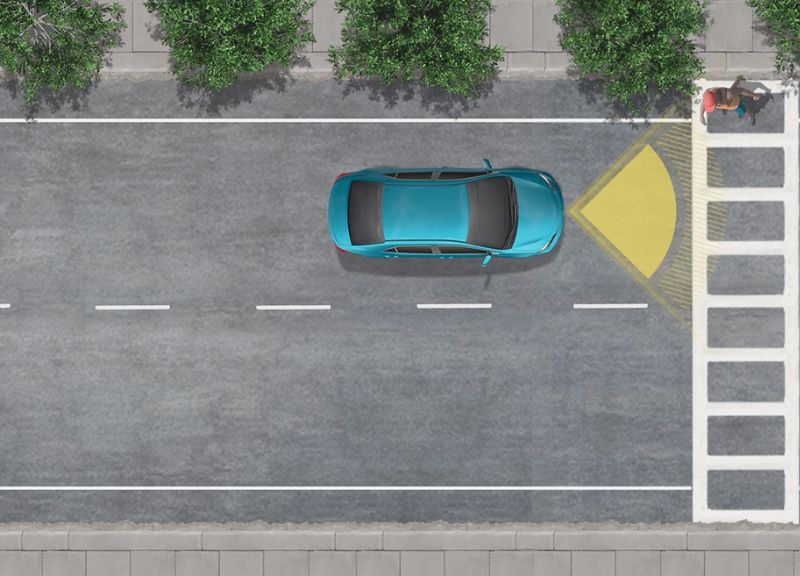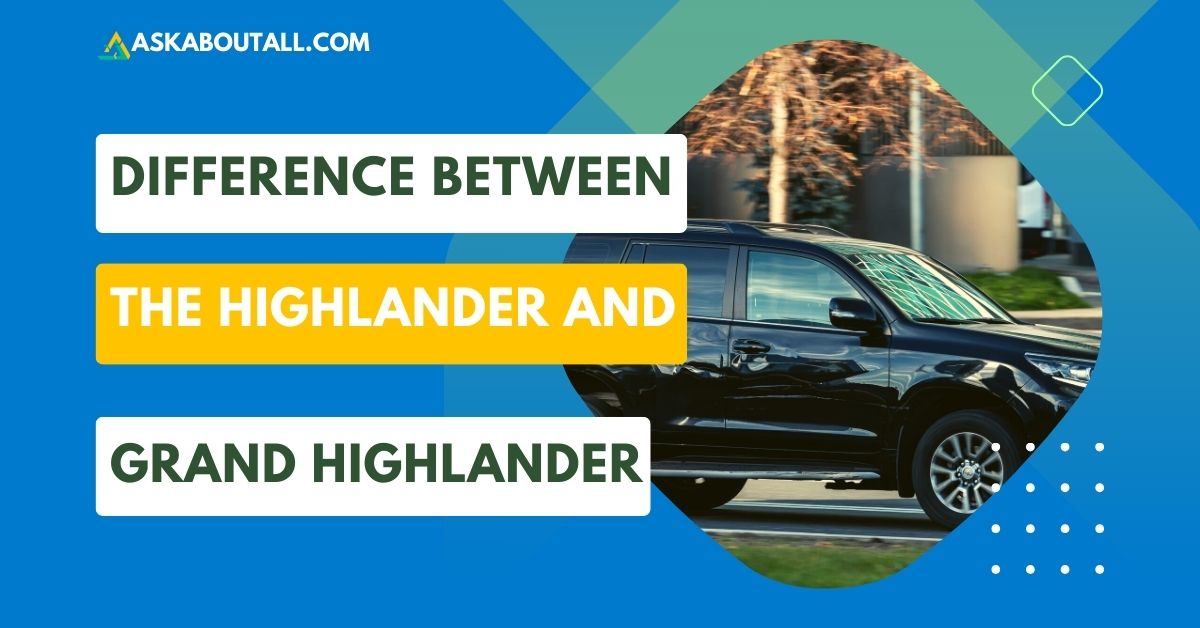Curious about the difference between the Highlander and Grand Highlander? Look no further! In this blog post, we’ll explore the key distinctions between these two popular Toyota SUVs.
Whether you’re in the market for a new car or want to learn more about these vehicles, we’ve got you covered.
From powertrain options to interior features, we’ll break down everything you need to know about the difference between the Highlander and Grand Highlander.
So buckle up, and let’s dive in!
Table of Contents
Highlander Vs. Grand Highlander: An Overview

The Highlander is a midsize SUV, while the Grand Highlander is a full-size crossover. Let’s look at the main differences between these two vehicles.
One of the most significant differences between the Highlander and the Grand Highlander is their size. The Grand Highlander is about 6 inches longer than the Highlander, approximately 2 inches taller and 2 inches wider.
This added size provides more interior space, making the Grand Highlander a great choice for those who need more room for passengers and cargo.
The Grand Highlander also has a more powerful engine than the Highlander. The 2024 Grand Highlander features a 3.5-liter V6 engine that delivers 295 horsepower and 263 lb-ft of torque.
In contrast, the 2023 Highlander features a 3.5-liter V6 engine that delivers 295 horsepower and 263 lb-ft of torque. The Grand Highlander also has an optional hybrid powertrain that delivers 243 horsepower and 175 lb-ft of torque.
Another difference between the Highlander and the Grand Highlander is their fuel economy. Due to its larger size, the Grand Highlander has a slightly lower fuel economy than the Highlander.
The 2023 Highlander gets an EPA-estimated 21-22/28-29 mpg city/highway, while the Grand Highlander gets an EPA-estimated 20-21/27-28 mpg city/highway.
The Grand Highlander also has more advanced features than the Highlander. For example, the Grand Highlander comes with a 12.3-inch touchscreen display, while the Highlander comes with an 8-inch touchscreen display.
The Grand Highlander also has a larger panoramic sunroof, a head-up display, and a digital rearview mirror.
In conclusion, the Highlander and the Grand Highlander are both excellent SUVs, but they are designed for different needs. If you need a smaller SUV that is easy to maneuver, the Highlander is a great choice.
However, if you need a larger SUV that can accommodate more passengers and cargo, the Grand Highlander is the way to go.
Related: Find the difference between 71 and 72 Chevelle.
Difference Between The Highlander And Grand Highlander: Details Breakdown
Power and Performance

Regarding power and performance, the Toyota Grand Highlander and Highlander have a lot of similarities, but there are some key differences to consider.
The standard engine in the Highlander is a 3.5-liter V6 that delivers 265 horsepower and 310 lb-ft of torque. It comes with an eight-speed automatic transmission. On the other hand, the Grand Highlander has a hybrid powertrain that combines a V6 engine with electric motors to deliver 362 horsepower and 400 lb-ft of torque.
If you’re looking for a more fuel-efficient option, the Grand Highlander’s hybrid max powertrain is worth considering. It delivers 243 horsepower and has an EPA rating of 36 mpg combined.
One of the most notable differences between the two models is the third-row legroom. The Grand Highlander’s extra 5 inches of legroom make it possible for “real-sized” adults to fit comfortably in the back. However, the front-seat legroom decreases slightly while the second-row legroom increases slightly.
Overall, if you’re looking for a more powerful and fuel-efficient option, the Grand Highlander’s hybrid powertrain is the way to go. However, if you don’t need the extra legroom and prefer a traditional gasoline engine, the Highlander’s V6 is a solid choice.
Interior and Comfort
Regarding interior and comfort, the Toyota Grand Highlander has a few advantages over the regular Highlander. The Grand Highlander has a longer wheelbase, translating to more interior space.
The third row of the Grand Highlander has an additional 5.5 inches of legroom, an inch of headroom, and more than 2 inches of shoulder space than the regular Highlander. This means that the third-row seats in the Grand Highlander are more accommodating for adults.
However, the increase in third-row space comes at a cost. The front-seat legroom in the Grand Highlander is slightly less than the regular Highlander.
The second-row legroom, on the other hand, is slightly more in the Grand Highlander. This means that passengers in the second row of the Grand Highlander will have more space to stretch out.
Both the Highlander and Grand Highlander can seat up to eight passengers, but the Grand Highlander comes standard with captain’s chairs in the second row, which reduces the total passenger capacity to seven.
The captain’s chairs provide more comfort and space for passengers in the second row, making long journeys more comfortable.
Regarding cargo space, the Grand Highlander has a slight advantage over the regular Highlander. The Grand Highlander has 20.6 cubic feet of space behind the third row, while the regular Highlander has 16.0 cubic feet.
This means that the Grand Highlander can carry more luggage or groceries when all three rows of seats are in use.
Additionally, the Grand Highlander offers a head-up display and a digital rearview mirror, which are not available in the regular Highlander. The head-up display projects important information, such as speed and navigation directions, onto the windshield, allowing the driver to keep their eyes on the road.
The digital rearview mirror uses a camera to provide a wider and clearer view of what’s behind the vehicle, making it easier to park and maneuver in tight spaces.
Overall, the Grand Highlander offers more interior space, comfortable third-row seats, and additional features that enhance the driving experience. However, the regular Highlander is still a spacious and comfortable SUV that can accommodate families and their belongings.
Exterior and Styling

Regarding the exterior and styling, the Toyota Grand Highlander and Highlander have some key differences. The Grand Highlander is larger and boxy, with sharp angles and a more upright stance. On the other hand, the Highlander has a sleeker and trendier styling.
In terms of exterior dimensions, the Grand Highlander stretches 6.5 inches longer, 2.0 inches taller, and 2.3 inches wider than the Highlander. Both vehicles have a ground clearance of 8.0 inches, which is good for off-road adventures.
The Grand Highlander also has a more prominent front grille and larger headlights compared to the Highlander. This gives it a more aggressive and commanding presence on the road. The Highlander, on the other hand, has a more streamlined front end with a smaller grille and headlights.
Overall, the Grand Highlander’s exterior and styling make it stand out. Its larger proportions and bold design give it a unique look that will turn heads. The Highlander, on the other hand, has a more modern and sleek appearance that is perfect for those who prefer a more understated style.
Technology and Features
Regarding technology and features, both the Highlander and Grand Highlander have much to offer. Let’s take a closer look at what each model has to offer.
Standard Features
The Highlander comes with many standard features, including a 6-speaker audio system, an 8-inch infotainment screen, Apple CarPlay and Android Auto, and a suite of advanced safety features.
The Grand Highlander builds on these features with a larger 12.3-inch infotainment screen, a 9-speaker audio system, and wireless device charging.
Upgrades
If you want to upgrade your Highlander, opt for the XLE, Limited, or Platinum trims. The XLE adds leather upholstery, a power moonroof, and a power liftgate. The Limited trim adds even more luxury with features like a JBL premium audio system, heated and ventilated front seats, and a digital gauge cluster.
The Platinum trim takes things to the next level with a panoramic moonroof, a 360-degree camera system, and a rear-seat entertainment system.
The Grand Highlander comes in two trims: XSE and Platinum. The XSE adds a sport-tuned suspension, unique exterior styling, and a panoramic moonroof.
The Platinum trim builds on this with features like a 10-inch color head-up display, a 12-speaker JBL premium audio system, and a rear-seat entertainment system.
USB Ports
The Highlander and Grand Highlander come with multiple USB ports, making it easy to keep your devices charged and connected.
Infotainment Screen
The Grand Highlander’s larger 12.3-inch infotainment screen is a standout feature, providing a clear and easy-to-use interface for all your entertainment and navigation needs.
Wireless Charging
The Grand Highlander’s wireless charging pad is a convenient feature that allows you to charge your compatible devices without cords or cables.
Digital Gauge Cluster
The Highlander’s Limited and Platinum trims have a 7-inch digital gauge cluster, providing a customizable and informative display of your vehicle’s performance and stats.
Overall, both the Highlander and Grand Highlander offer a range of technology and features to enhance your driving experience. Whether you’re looking for advanced safety features, premium audio, or a high-tech infotainment system, these SUVs have something to offer.
Safety and Driving Assistance

Regarding safety features, the Toyota Highlander and Grand Highlander come equipped with Toyota Safety Sense (TSS) 2.5+. This suite of advanced safety features includes pre-collision warning with pedestrian detection, lane departure warning with steering assist, automatic high beams, and dynamic radar cruise control.
However, the Grand Highlander takes it further by introducing TSS 3.0. This includes features such as Proactive Driving Assist, which uses data from the vehicle’s navigation system to predict the road and adjust the cruise control accordingly.
The Grand Highlander also has a Rear Cross-Traffic Alert, which warns you of approaching vehicles when backing out of a parking space.
Regarding driving assistance, both vehicles have Adaptive Cruise Control, which adjusts your speed to maintain a safe distance from the vehicle in front of you. The Highlander also has regular Cruise Control, which allows you to set a constant speed without the need to adjust it manually.
Overall, both the Toyota Highlander and Grand Highlander are safe vehicles that prioritize driver and passenger safety with their advanced safety features. However, the Grand Highlander takes it further by introducing TSS 3.0 and additional driving assistance features.
Fuel Economy and Efficiency
When it comes to fuel economy and efficiency, the Toyota Grand Highlander and the Highlander both offer impressive options.
The Grand Highlander Hybrid Max with standard AWD checks in at 26/27/27 mpg, which is pretty impressive for a three-row SUV. On the other hand, the Highlander Hybrid gets an EPA-estimated 36/35/36 mpg, which is even better.
If you’re looking for a gas-only option, the Highlander gets an EPA-estimated 21/29/24 mpg, while the Grand Highlander gets an EPA-estimated 20/27/23 mpg. While the Grand Highlander’s fuel economy is lower than the Highlander’s, it’s still good for a larger vehicle.
Overall, both the Highlander and Grand Highlander offer impressive fuel economy and efficiency, especially if you opt for the hybrid versions. If you’re looking to save on gas, the Highlander Hybrid is worth considering.
Price and Value
When purchasing a vehicle, price is often a significant factor to consider. The Toyota Highlander and Grand Highlander have different starting prices, with the Highlander L starting at around $38,000 and the Grand Highlander starting at about $44,500. The Grand Highlander’s price can reach nearly $60,000 in range-topping Hybrid Max spec.
While the Grand Highlander is more expensive, it offers additional features and benefits that may make it worth the extra cost. For example, the Grand Highlander is about 6 inches longer than the regular model, making it more spacious for passengers and cargo.
Additionally, the Grand Highlander comes with a more powerful engine and a hybrid option, providing better fuel efficiency and a smoother ride.
When considering the value of these vehicles, it’s essential to look beyond the initial price tag and consider the long-term benefits. The Grand Highlander’s additional features and better fuel efficiency may save you money in the long run, especially if you plan to keep the vehicle for several years.
Overall, while the Grand Highlander is more expensive, it offers additional features and benefits that may make it worth the extra cost. However, if you’re on a tight budget, the Highlander L may be a better option.
Drawbacks and Alternatives
While the Highlander and Grand Highlander are both excellent SUVs, they have drawbacks that may make you consider other options. Here are some things to keep in mind:
- Price: The Grand Highlander is more expensive than the regular Highlander, so if you’re on a tight budget, the regular Highlander may be a better choice.
- Size: The Grand Highlander is larger than the regular Highlander, making it more difficult to maneuver in tight spaces. If you need a smaller SUV, consider the Ford Escape or the Ford Edge instead.
- Fuel Economy: While the Highlander and Grand Highlander come with hybrid engines, their fuel economy ratings are lower than other SUVs. If fuel efficiency is a top priority for you, consider the Toyota RAV4 Hybrid or the Honda CR-V Hybrid instead.
When it comes to alternatives to the Highlander and Grand Highlander, there are plenty of options. Here are a few:
- Ford Explorer: The Ford Explorer is a popular three-row SUV with plenty of space, a comfortable ride, and a range of engine options. It’s also available in a hybrid version for better fuel economy.
- Chevrolet Traverse: The Chevrolet Traverse is another three-row SUV with a spacious interior and a smooth ride. It’s also available with all-wheel drive for better traction in inclement weather.
- Honda Pilot: The Honda Pilot is a reliable and practical three-row SUV that offers a comfortable ride, a spacious interior, and plenty of standard features. It’s also available with all-wheel drive and advanced safety features.
Ultimately, the choice between the Highlander and Grand Highlander will come down to your preferences and priorities. Consider factors like price, size, and fuel economy, as well as your own needs and lifestyle, to determine which SUV is right for you.







